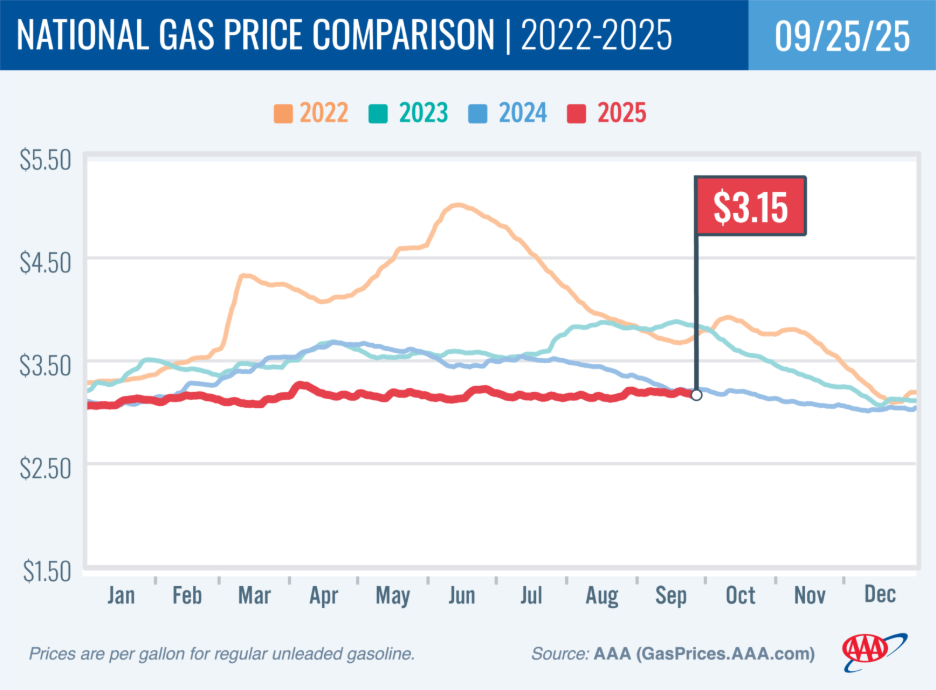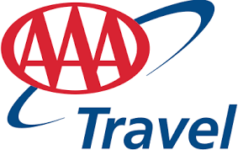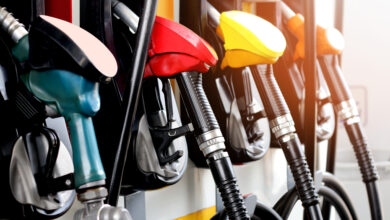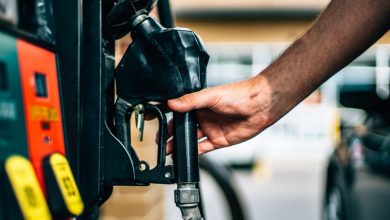Fall Begins With Falling Gas Prices
The following was reported by the American Automobile Association (AAA).
The national average for a gallon of regular dropped five cents since last week to $3.15. Fall is officially here, bringing lower gas prices and winter-blend gasoline, which is cheaper to produce. Pacific Northwest drivers are getting some relief now that a pipeline issue has been resolved and pump prices are trending downward. The Atlantic hurricane season is halfway over, but the tropics remain a concern for the next two months if there’s storm activity in the Gulf that affects refineries in the area.
- Thursday, Sept. 25’s National Average: $3.157
- One Week Ago: $3.203
- One Month Ago: $3.161
- One Year Ago: $3.213

According to new data from the Energy Information Administration (EIA), gasoline demand increased from 8.81 million b/d last week to 8.95 million. Total domestic gasoline supply decreased from 217.6 million barrels to 216.6 million. Gasoline production increased last week, averaging 9.7 million barrels per day.
Oil Market Dynamics
At the close of Wednesday, Sept. 24’s formal trading session, WTI rose $1.58 to settle at $64.99 a barrel. The EIA reports crude oil inventories decreased by 0.6 million barrels from the previous week. At 414.8 million barrels, U.S. crude oil inventories are about 4% below the five-year average for this time of year.
EV Charging
The national average per kilowatt hour of electricity at a public EV charging station stayed the same this past week at 36 cents.
State Stats
Gas
The nation’s top 10 most expensive gasoline markets are California ($4.64), Washington ($4.57), Hawaii ($4.48), Oregon ($4.21), Nevada ($3.90), Alaska ($3.88), Arizona ($3.57), Idaho ($3.50), Utah ($3.39) and Illinois ($3.37).
The nation’s top 10 least expensive gasoline markets are Oklahoma ($2.66), Mississippi ($2.68), Louisiana ($2.72), Texas ($2.73), Tennessee ($2.75), Arkansas ($2.76), Alabama ($2.78), Kentucky ($2.81), Missouri ($2.84) and South Carolina ($2.85).
Electric
The nation’s top 10 most expensive states for public charging per kilowatt hour are Alaska (51 cents), West Virginia (47 cents), Hawaii (46 cents), South Carolina (45 cents), New Hampshire (43 cents), Tennessee (43 cents), Alabama (43 cents), Arkansas (42 cents), Montana (42 cents) and Louisiana (42 cents).
The nation’s top 10 least expensive states for public charging per kilowatt hour are Kansas (25 cents), Maryland (28 cents), Missouri (28 cents), Nebraska (28 cents), Utah (28 cents), Delaware (31 cents), Vermont (32 cents), North Carolina (32 cents), Colorado (33 cents) and Iowa (34 cents).


